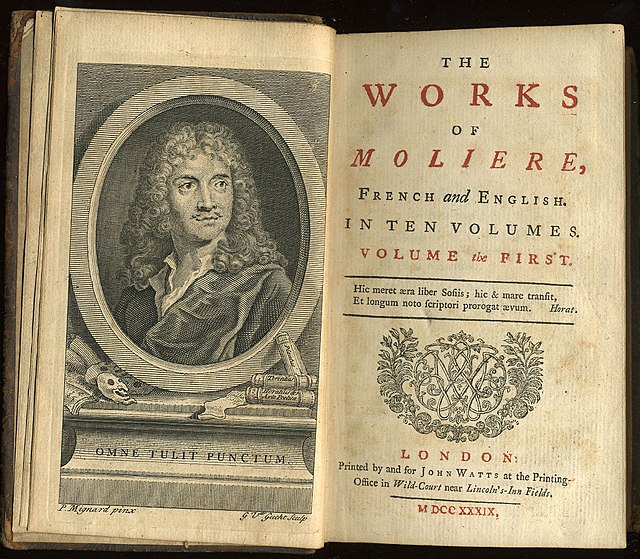Monsieur de Pourceaugnac is a three-act comédie-ballet—a ballet interrupted by spoken dialogue—by Molière, first presented on 6 October 1669 before the court of Louis XIV at the Château of Chambord by Molière's troupe of actors. Subsequent public performances were given at the theatre of the Palais-Royal beginning on 18 November 1669. The music was composed by Jean-Baptiste Lully, the choreography was by Pierre Beauchamp, the sets were by Carlo Vigarani, and the costumes were created by the chevalier d’Arvieux.
The title page of the original manuscript
Jean-Baptiste Poquelin, known by his stage name Molière, was a French playwright, actor, and poet, widely regarded as one of the great writers in the French language and world literature. His extant works include comedies, farces, tragicomedies, comédie-ballets, and more. His plays have been translated into every major living language and are performed at the Comédie-Française more often than those of any other playwright today. His influence is such that the French language is often referred to as the "language of Molière".
Portrait of Molière by Pierre Mignard (c. 1658)
Molière as Caesar in The Death of Pompey by Pierre Corneille, portrait by Nicolas Mignard
Illustration after Pierre Brissart for the printed text of L'Étourdi ou les Contretemps
First volume of a 1739 translation into English of all of Molière's plays, printed by John Watts.





